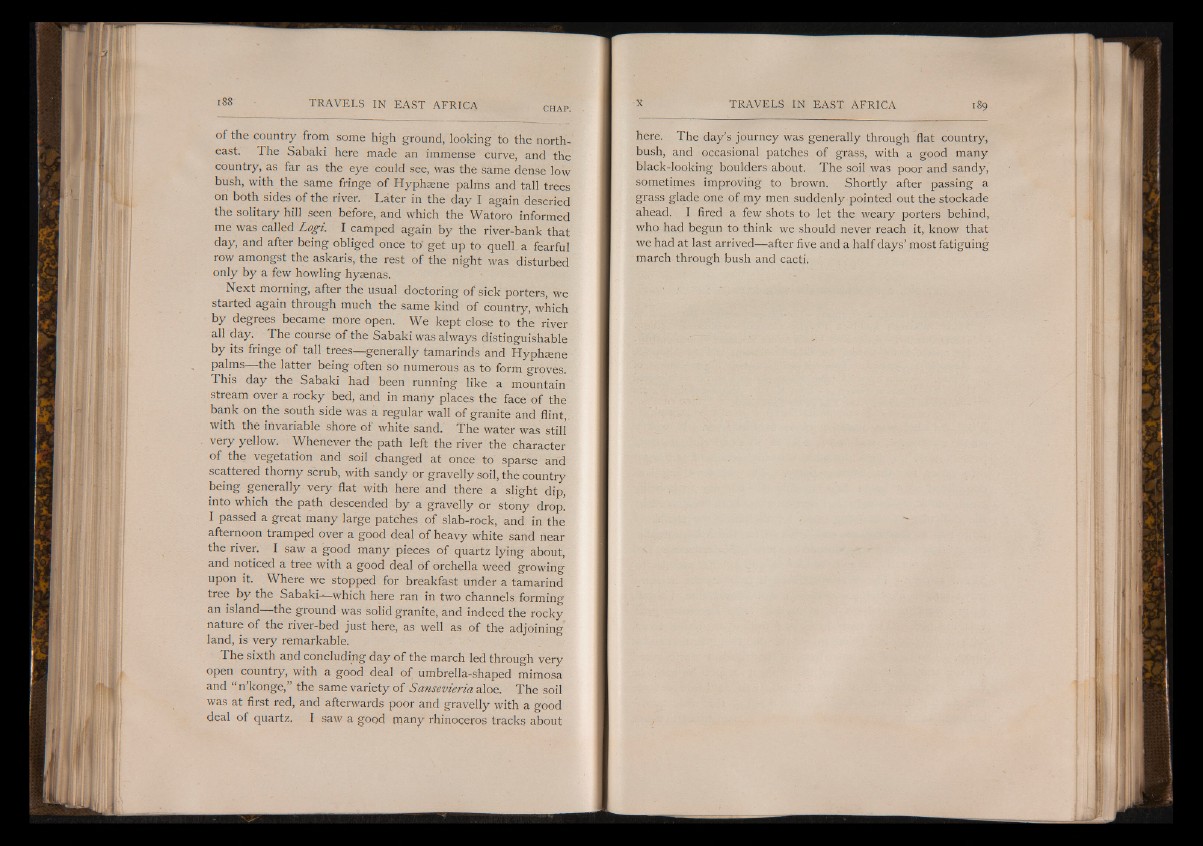
of the country from some high ground, looking to the northeast.
The Sabaki here made an immense curve, and the
country, as far as the eye could see, was the same dense low
bush, with the same fringe of Hyphsene palms and tall trees
on both sides of the river. Later in the day I again descried
the solitary hill seen before, and which the Watoro informed
me was called Logi. I camped again by the river-bank that
day, and after being obliged once to' get up to quell a fearful
row amongst the askaris, the rest of the night was disturbed
only by a few howling hyaenas.
Next morning, after the usual doctoring of sick porters, we
started again through much the same kind of country, which
by degrees became more open. We kept close to the river
all day. The course of the Sabaki was always distinguishable
by its fringe of tall trees— generally tamarinds and Hyphaene
palms the latter being often so numerous as to form groves.
This day the Sabaki had been running like a mountain
stream over a rocky bed, and in many places the face of the
bank on the south side was a regular wall of granite and flint,
with the invariable shore of white sand. The water was still
very yellow. Whenever the path left the river the character
of the vegetation and soil changed at once to sparse and
scattered thorny scrub, with sandy or gravelly soil, the country
being generally very flat with here and there a slight dip,
into which the path descended by a gravelly or stony drop!
I passed a great many large patches of slab-rock, and in the
afternoon tramped over a good deal of heavy white sand near
the river. I saw a good many pieces of quartz lying about,
and noticed a tree with a good deal of orchella weed growing
upon it. Where we stopped for breakfast under a tamarind
tree by the Sabaki—-which here ran in two channels forming
an island— the ground was solid granite, and indeed the rocky
nature of the river-bed just here, as well as of the adjoining
land, is very remarkable.
The sixth and concluding day of the march led through very
open country, with a good deal of umbrella-shaped mimosa
and “ n’konge,” the same variety of Sansevieria aloe. The soil
was at first red, and afterwards poor and gravelly with a good
deal of quartz. I saw a good many rhinoceros tracks about
here. The day’s journey was generally through flat country,
bush, and occasional patches of grass, with a good many
black-looking boulders about. The soil was poor and sandy,
sometimes improving to brown. Shortly after passing a
grass glade one of my men suddenly pointed out the stockade
ahead. I fired a few shots to let the weary porters behind,
who had begun to think we should never reach it, know that
we had at last arrived— after five and a half days’ most fatiguing
march through bush and cacti.